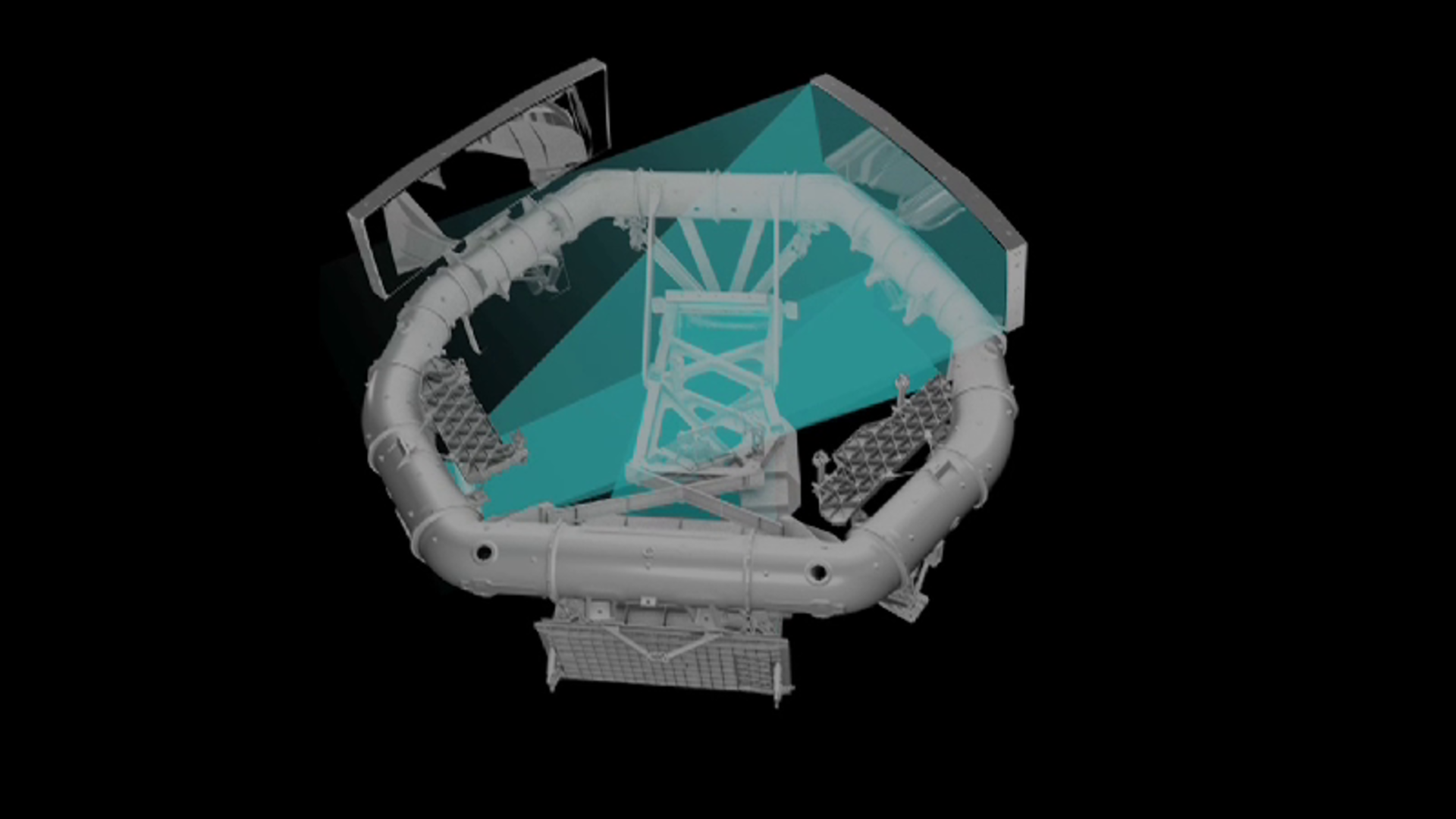Telescopes
Gaia is a space telescope, or rather, two space telescopes. Its telescopes involve ten mirrors of different shapes and sizes to collect, focus and direct light into Gaia’s science instruments for detection.
Each telescope has a large primary mirror with a collecting area of about 0.7 m^2. These have a rectangular shape to make the most efficient use of the limited space inside the spacecraft. Although these are small mirrors compared with many ground-based telescopes, Gaia has the supreme advantage of observing from space, where there is no atmospheric disturbance to blur the images.
Gaia is just 3.5 m across (excluding the sunshade, which is about 10 m across). Three curved mirrors and three flat mirrors focus and repeatedly fold the light over a total distance of 35 m before it reaches the detectors.
Each of Gaia’s three science instruments uses a set of digital detectors – charged coupled devices (CCDs) – to record the starlight falling onto them. Together Gaia’s CCDs make the largest focal plane ever flown to space, a total of one billion pixels covering an area of 0.38 m^2.



